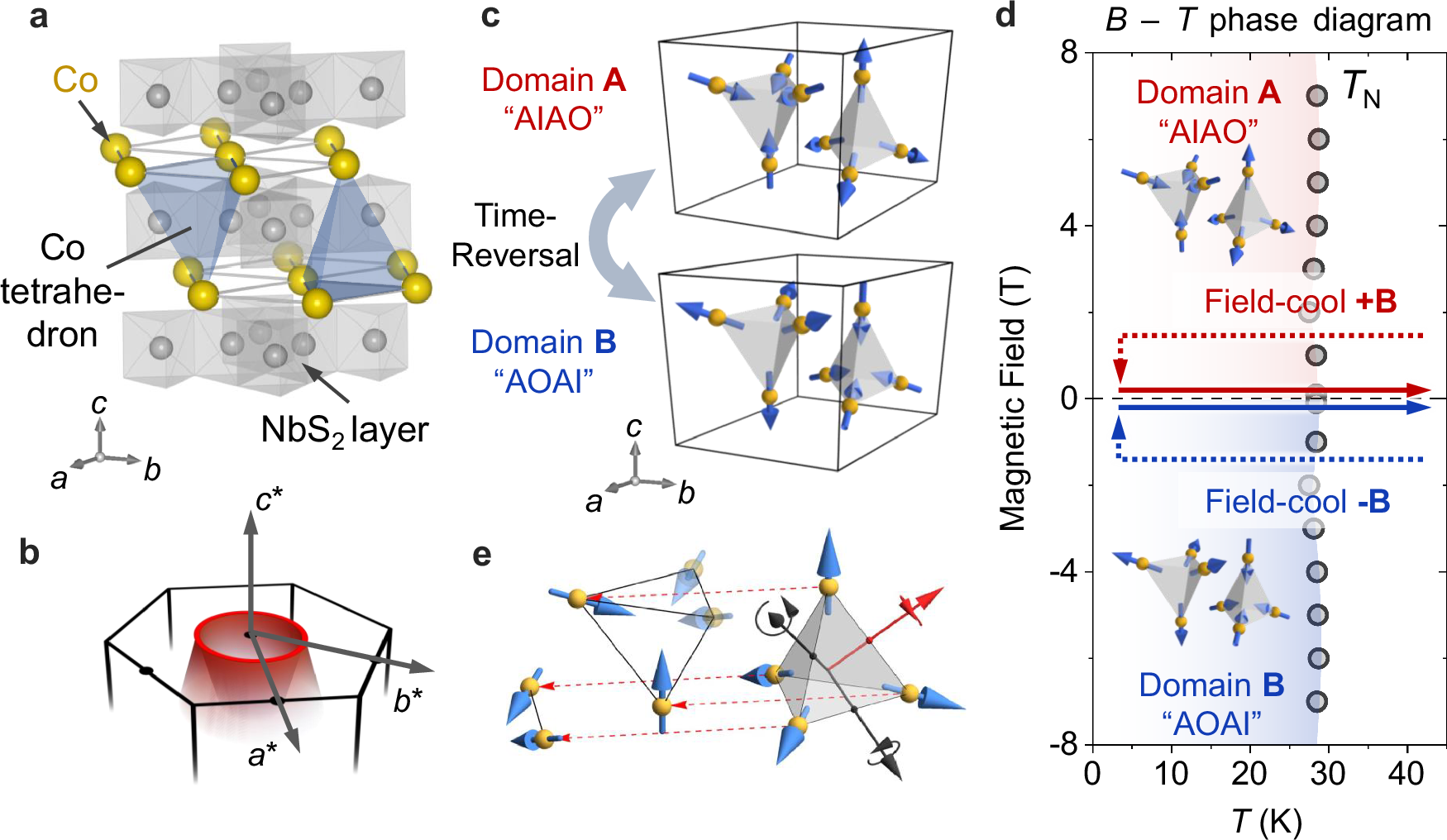2025-03-26 理化学研究所,東京大学,科学技術振興機構
<関連情報>
- https://www.riken.jp/press/2025/20250326_1/index.html
- https://www.nature.com/articles/s41467-025-57320-9
キラル格子反強磁性体CoNb3S6におけるギャップ節点面と大きなトポロジカルネルンスト効果 Gapped nodal planes and large topological Nernst effect in the chiral lattice antiferromagnet CoNb3S6
Nguyen Duy Khanh,Susumu Minami,Moritz M. Hirschmann,Takuya Nomoto,Ming-Chun Jiang,Rinsuke Yamada,Niclas Heinsdorf,Daiki Yamaguchi,Yudai Hayashi,Yoshihiro Okamura,Hikaru Watanabe,Guang-Yu Guo,Youtarou Takahashi,Shinichiro Seki,Yasujiro Taguchi,Yoshinori Tokura,Ryotaro Arita &Max Hirschberger
Nature Communications Published:26 March 2025
DOI:https://doi.org/10.1038/s41467-025-57320-9

Abstract
The electronic structure of compensated antiferromagnets (CAF) creates large functional responses, reminiscent of ferromagnets and suitable for data storage and readout, despite (nearly) net-zero spontaneous magnetization. Many experimental signatures of CAF – such as giant thermoelectric Nernst effects – should be enhanced when two or more electronic bands are nearly degenerate in vicinity of the Fermi energy. Here, we report a zero-field, thermoelectric Nernst effect >1 μV/K in the CAF CoNb3S6 despite its tiny net magnetization ~2 milli − μB. As drivers of the functional Nernst and Hall effects, we identify near-degeneracies of electron bands at the upper and lower boundaries of the first Brillouin zone, which are vestiges of nodal planes enforced by a screw axis symmetry in the paramagnetic state. Hot spots of emergent, or fictitious, magnetic fields are formed at the slightly gapped nodal planes. Taking into account more than six hundred Wannier orbitals, our theoretical model reproduces the observed spontaneous Nernst effect, emphasizes the role of proximate spin-space group symmetries and nodal planes for the electronic structure of CAF, and demonstrates the promise of ab-initio search for functional responses in a wide class of materials with reconstructed unit cells (supercells) due to spin or charge order.



